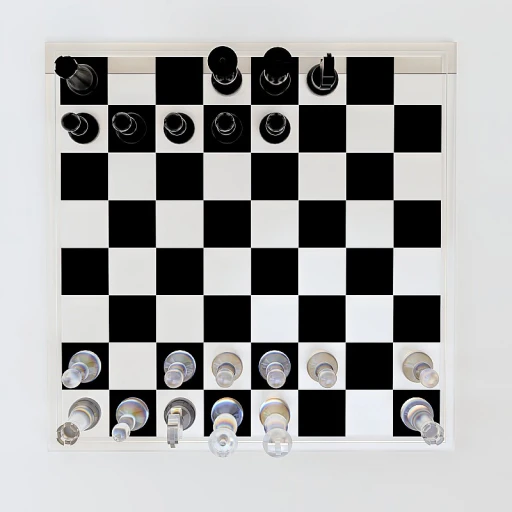
The Intersection of Customer Success and HR Data
In today’s data-driven world, the intersection of customer success and HR data is becoming increasingly significant. Understanding how these two fields overlap can lead to substantial improvements in both employee satisfaction and customer loyalty. Companies are realizing that a holistic approach involving multiple teams—such as customer success, HR, and marketing—can open new opportunities for business growth and success.
The Link Between Customer Success and HR Analytics
At the core of these intersecting domains is the need to ensure that both employees and customers have optimized experiences. Customer success tasks are often closely aligned with HR analytics, as both seek to enhance satisfaction and engagement. A team equipped with HR data insights is better positioned to address employee concerns and foster an environment conducive to productivity—ultimately benefiting the customer journey.
Leveraging Data for Strategic Advantage
Focusing on customer success isn’t solely the responsibility of service teams or account managers. With integrated data from HR insights, companies can develop a more robust strategy that taps into both employee and customer experiences. This convergence of information allows for a more nuanced understanding of both employee satisfaction and customer retention.
By analyzing qualitative data gleaned from employee feedback and service interactions, businesses can identify opportunities to streamline their product management processes and enhance the overall customer experience. Success managers and other team members will find themselves better equipped to align internal goals with the needs of their customers. In turn, this alignment leads to a more cohesive approach that effectively maps out the customer's journey and secures business goals.
Visualizing Data with Venn Diagrams
Bringing Data to Life with Visual Tools
Visualizing data can significantly enhance the understanding of complex information, such as human resources data. Venn diagrams, in particular, serve as a powerful tool in this regard. They help HR professionals and Customer Success Managers (CSMs) highlight the intersections and unique components of various datasets, facilitating a more informed analysis. Venn diagrams open a window into the intricate relationships between customer success and HR data. By using these diagrams, professionals can easily map out how product management, customer service, and business goals intersect, making it easier for teams to understand customer journeys and improve customer satisfaction.Enhanced Team Synergy
When multiple departments such as marketing, customer success, and product management collaborate, Venn diagrams can be instrumental in aligning their efforts. They help all teams involved understand each other's roles and contributions to the overall business strategy. Such visualization ensures that everyone from account managers to success managers are on the same page regarding the company's objectives. Moreover, Venn diagrams can be an effective tool for identifying opportunities. By clearly illustrating which areas need more attention, success teams can prioritize tasks and strategies effectively. The ability to visualize data interactions aids success managers in tailoring their strategies to better meet customer needs.A Comprehensive Approach to Digital Transformations
In the era of digital transformations, understanding and visualizing data is more crucial than ever. With the help of Venn diagrams, companies can dissect customer feedback and map out potential improvements in their product and service offerings. This leads to informed decision-making, ultimately contributing to a superior customer experience and increased customer satisfaction. For businesses aiming to leverage the full potential of their data, incorporating Venn diagrams into their analysis strategy can provide a clearer picture of how customer success intersects with other business objectives. This can align teams on shared goals and drive company-wide success. For more insights, you may refer to understanding the dynamics of labour market intelligence here.Key Components of a Customer Success Venn Diagram
Exploring the Building Blocks of Effective Venn Diagrams
- Customer Experience and Satisfaction: The first circle in a functional venn diagram should encompass all elements related to customer experience and customer satisfaction. This includes insights from analyzing customer feedback, which aids success managers in fine-tuning the customer journey.
- Product and Service Offerings: Another critical component is the product-service axis. Understanding what customers expect from your product and how it aligns with their needs is a significant step toward achieving your business goals.
- Company Strategy and Resources: The third essential circle focuses on aligning company strategy with available resources. This part of the venn diagram highlights the digital solutions and resources available to success teams, and how they can be utilized to enhance service delivery.
Analyzing Employee Feedback
Decoding Employee Insights
Analyzing employee feedback is a crucial component in the realm of human resources data. It provides invaluable insights into the customer success journey within a company. When we talk about customer success, it’s not just about the external customers but also about the internal teams that drive the business goals forward.
Employee feedback acts as a window into the company’s culture and operational efficiency. It helps success managers and product management teams to understand the areas where the customer experience can be enhanced. This feedback loop is essential for identifying opportunities for improvement and aligning business strategies with the needs of both employees and customers.
Integrating Feedback into Strategy
To effectively leverage employee feedback, companies should consider the following:
- Collecting Data: Regular surveys and feedback sessions can help gather comprehensive data on employee satisfaction and challenges.
- Analyzing Patterns: Use Venn diagrams to visually represent overlapping areas of employee concerns and customer satisfaction metrics.
- Implementing Changes: Develop strategies that address the common issues identified, ensuring that product service and customer service are aligned with employee feedback.
- Monitoring Progress: Continuously track the impact of changes on both employee morale and customer success metrics to ensure ongoing improvement.
By integrating employee feedback into the company’s customer success strategy, organizations can enhance their customer journey and achieve higher levels of customer satisfaction. This approach not only benefits the external customers but also empowers the internal teams to work more effectively towards common business goals.
Case Studies: Success Stories
Real-Life Applications of Venn Diagrams in Customer Success
The integration of Venn diagrams into business strategies, particularly in customer success scenarios, can be seen in several inspiring case studies. Understanding how these visual tools can effectively operate within your business strategy can truly open windows to new insights.- Enhanced Product Management: One company achieved substantial growth by utilizing Venn diagrams to analyze overlapping areas of team responsibilities and customer feedback. This process allowed success managers to identify opportunities for improvement in both product service and customer satisfaction.
- Streamlined Customer Service: Another organization used Venn diagrams to map out the intersection between customer journey and service touchpoints. By doing so, they were able to improve customer experience significantly, reduce response times, and enhance the overall success of customer service teams.
- Refined Marketing Strategies: A third example illustrates how a business utilized Venn diagrams to align marketing comments with the customer success team's efforts. This approach facilitated better synchronization between marketing and product teams, thereby improving the alignment of business goals with customer needs.
Implementing Venn Diagrams in HR Analytics
Integrating Venn Diagrams for Enhanced HR Analytics
Implementing Venn diagrams into HR analytics can significantly enhance how a company visualizes and analyzes complex data intersections. These diagrams help to better understand how customer success and HR data intersect and can be instrumental in identifying opportunities for improvement. Incorporating Venn diagrams in your analytics toolkit will open windows to a more intuitive comprehension of interactions between different departments. This is especially relevant for aligning customer service and product management teams to the overarching business goals. Here’s how companies can implement Venn diagrams effectively:- Comprehensive Collaboration: By getting customer success managers, success teams, and HR professionals to work together, the company can map out key overlaps in customer journey and employee pathways. This collaboration is crucial for tailoring strategies that improve both employee and customer satisfaction.
- Real-time Data Analysis: With the increased reliance on digital tools, it’s feasible to update and revisit Venn diagrams regularly. CSMs and success managers should ensure that the data used is current, enabling account managers and marketing teams to quickly adjust strategies for enhancing customer experience.
- Strategy Development: Utilizing customer feedback within the Venn diagram framework allows teams to develop proactive strategies. By pinpointing areas where customer experience might influence employee performance or vice versa, businesses can streamline their product and service offerings more precisely.
- Training and Development: This intersection of data also aids in creating tailored training programs for your success team. By understanding the needs of the employees and customers alike, HR can coordinate with management to foster a robust learning environment that prioritizes customer success outcomes.












